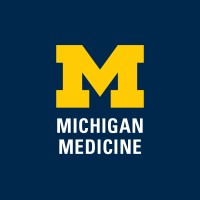
Michigan Medicine
Michigan Medicine, based in Ann Arbor, Michigan, is part of one of the world’s leading universities. Michigan Medicine is a premier, highly ranked academic medical center and award-winning health care system with state-of-the-art facilities. Our vision is to create the future of health care through scientific discovery, innovations in education, and the most effective and compassionate care. We want to be the leader in health care, health care reform, and biomedical innovation. Michigan Medicine includes the U-M Hospitals and Health Centers; the U-M Medical School and its Faculty Group Practice; one of the nation's largest biomedical research communities; and education programs that train thousands of future health professionals and scientists each year. We were formerly known as the University of Michigan Medical Center; today that term applies generally to the collection of buildings on our main medical campus in Ann Arbor. We have a close partnership with the U-M School of Nursing and other health sciences schools at U-M. Through the Michigan Health Corporation, we are able to form partnerships outside of our University.






